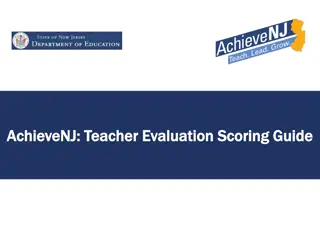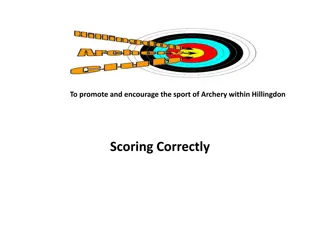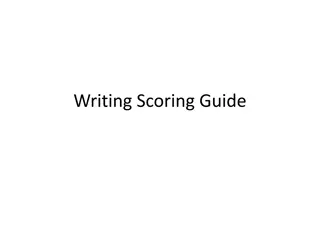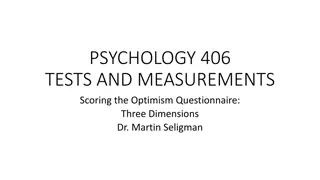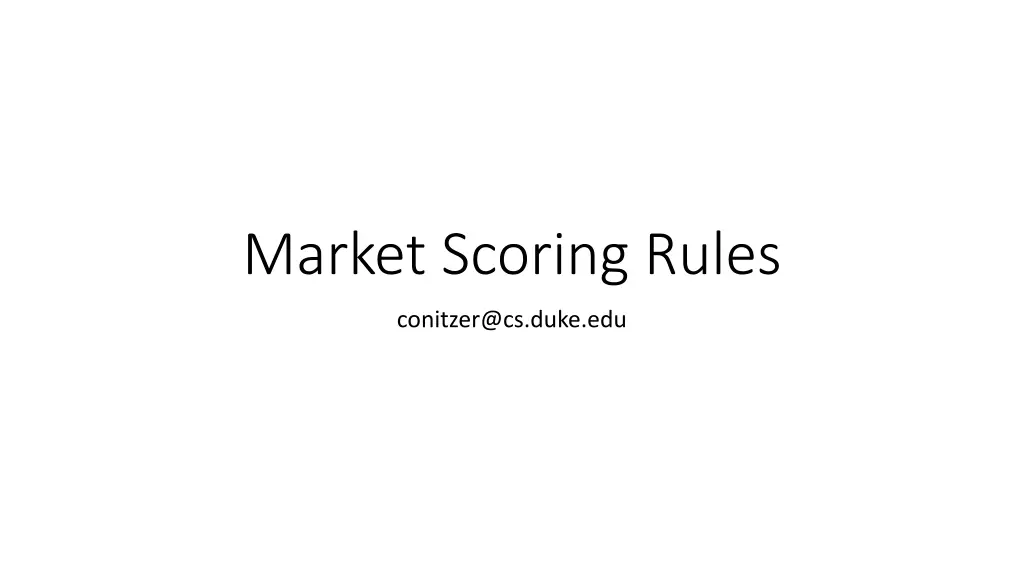
Market Scoring Rules and Forecaster Strategies
Explore the concept of market scoring rules for forecasters, including scenarios with multiple forecasters and biased coins. Discover how to aggregate forecasters' information effectively and consider the use of logarithmic scoring rules.
Download Presentation

Please find below an Image/Link to download the presentation.
The content on the website is provided AS IS for your information and personal use only. It may not be sold, licensed, or shared on other websites without obtaining consent from the author. If you encounter any issues during the download, it is possible that the publisher has removed the file from their server.
You are allowed to download the files provided on this website for personal or commercial use, subject to the condition that they are used lawfully. All files are the property of their respective owners.
The content on the website is provided AS IS for your information and personal use only. It may not be sold, licensed, or shared on other websites without obtaining consent from the author.
E N D
Presentation Transcript
Market Scoring Rules conitzer@cs.duke.edu
Multiple forecasters What if we have more than one forecaster? One idea: use a proper scoring rule for everyone separately, then aggregate Median? Mean? Geometric mean?
A story A coin may be biased (P(H|B) = .75) or unbiased (P(H|not B)=.5) Prior: half of coins are biased (P(B)=.5) We ask a forecaster to predict the outcome of the next toss of this coin Suppose he has seen this coin be tossed once before, and the outcome was H What should the forecaster predict (if rewarded with a proper scoring rule?)
Story, continued Same as before, but now there are two forecasters Each of them has observed a separate toss of the coin before, and in both cases the answer was H What should they each predict? assuming they are each rewarded via a proper scoring rule and do not know about each other? What should someone who has observed both coin tosses predict? but what if the two forecasters observed the same toss?
Takeaway We would like forecasters information to aggregate No way to do this automatically from individual forecasts unless we know more about the information structure But what if we want our system to work in a way that is independent of the information structure? (Possible) solution: assume the agents know the information structure
Market scoring rule Let the agents report probabilities piin sequence, i = 1, , n Pay agent i: S(pi, ) - S(pi-1, ) Set p0to something arbitrary Total payment: S(pn, ) - S(p0, ) Bounded (if S is bounded)
How its supposed to work (with logarithmic scoring rule) Information has been aggregated! Red must have seen Heads. I also saw Heads. I have no useful information to contribute. .67 I saw Heads. .67 .65 Initialized at .625 (maybe; could also just be initialized at .5) Payment if Heads happens eventually ln(.65) - ln(.625) ln(.67) - ln(.65) ln(.67) - ln(.67) = 0 Payment if Tails happens eventually ln(.35) - ln(.375) ln(.33) - ln(.35) ln(.33) - ln(.33) = 0
A failure mode: predict XOR of your fair coins Information has not been aggregated I have no idea what Red saw. I saw Heads I saw Heads. That doesn t tell me anything! .5 .5 Initialized at .5
Brittleness of previous example: suppose coins come up Heads with .51 Information has been aggregated! Red must have seen Heads. I saw Heads. I saw Heads. 0 .49 Initialized at .5 Blue takes most of the spoils. Is this fair? Incentive to wait? Who will cave first? ln(.51) - ln(.5) ln(1) - ln(.51) = reported probability that the coins came up the same
Another failure mode: sneaky Red on XOR I saw Tails, but I m going to make it look like I saw Heads. Red must have seen Heads. I saw Heads. Gotcha! 1 0 .49 Initialized at .5 ln(.49) - ln(.5) ln(0) - ln(.49) ln(1) - ln(0) What if Blue is also strategic?
Principal-aligned proper scoring rules, revisited [Shi, Conitzer, Guo 2009] Market scoring rules are not principal-aligned (why?) Nice thing about market scoring rules: upper bound on subsidy independent of n = #agents providing information I.e., cost of obtaining all information is O(1) Upper bound with principal alignment: O(n) (why?) Matching lower bound in the paper (assuming nonzero incentive for prediction)
Relationship between market scoring rules and more traditional forms of prediction markets [Hanson 2003, 2007; Chen and Pennock 2007] Consider a security that pays out $1 if outcome occurs Let q denote the number of such securities outstanding Consider a market maker always willing to sell more such securities at price p (q) (or buy at - p (q)) Want p (q) = 1 for all q Suppose p (q) is increasing in q (to 1 in the limit) Suppose the total paid price is path independent, C(q) Moving to q from q costs C(q ) - C(q) I want to buy (2, 1, 0) too I want to buy (2, 1, 0) That ll cost you $1 Now it costs $1.50
Market maker for logarithmic scoring rule Let C(q) = ln exp{q } Then the current price of an security is p (q) = exp{q } / exp{q } Suppose you believe the probability vector should be p Suppose you end up trading the market towards a q such that exp{q } = k You will want to have exp{q } / k = p or q = ln kp (why?) So you will pay ln exp{q } = ln k (minus a constant) For the realized outcome you will receive q = ln kp (minus a constant) So you get ln kp - ln k = ln p (plus/minus a constant)!






